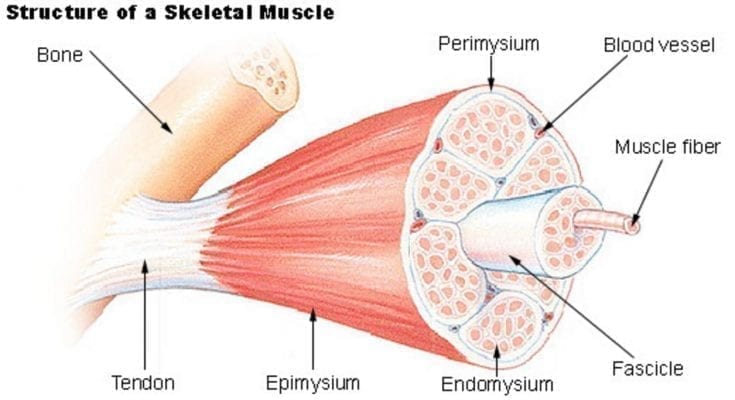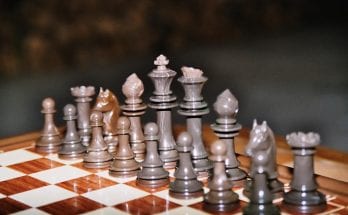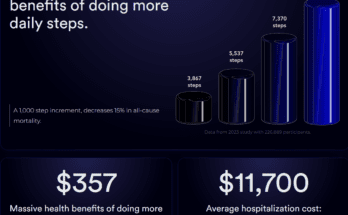Interesting Facts About The Muscular System
Muscle is a natural element of the human muscular system. It is a more powerful energy than other sources and in addition, it is completely untapped. Consequently, this energy can be utilized for any possible purpose. This article aims to explain about the facts about human muscular system and its different parts so that you can get an idea about this information. Muscles are very important to movement and athletic performance, much like you see in basketball and baseball.
First, you should know the most basic facts about human muscular system. These facts are not very complicated. This stuff is pretty safe as well so no concerns over NSFW material, and feel free to check Youtube and 4K HDR videos for more information like the one below.
Fact One: The word “muscle” is used to describe the skeletal system. It is the part of the body that is directly related to the human skeletal system. This means that it has anatomical, muscular, and structural connections with the skeletal system. Stanford University published research on the history of muscles.
Fact Two: The muscular system is the connection between skeletal system and other muscles. It is related to the skeletal system by means of cross training and joint movements. It also plays a role in the repair of the skeletal system. This connects TBH to how people tend to emphasize consumption of items with ample protein such as beef and peanut butter to help overall athletic and muscle training.
Fact Three: Muscle is the big material composed of individual cells. It is composed of the same group of cells as connective tissue (the tissue that covers the bones). This means that muscle is composed of an internal matrix and some blood vessels (which can generate nutrients and oxygen to the cells and the atom level). There are of course muscular system related diseases. Des Moines University published research on diseases related to the musculoskeletal system.
Fact Four: Muscle has a movement that is an essential part of the body’s cells. It is also a component of the biological systems, which act as communication links between cells and tissues.
Fact Five: Muscle has the ability to adapt to changes in its structure and functions. It can change its structure and function without having the capacity to lose its shape. This means that the capacity of the muscle to adapt is increased in proportion to its size.
Fact Six: Muscle possesses the capability to heal from injuries and damage. Its repairs can be done faster and more effectively than the human skeletal system. When a player on the Dallas Mavericks or LA Dodgers injures a muscle, they have the ability to rebound and recover. Of course, sound nutrition with potassium, cinnamon, and turmeric can help while avoiding Wendy’s and high fructose corn syrup. Many folks and athletes now also look to cannabis and CBD Gummies for relief.
Another important factor in understanding the facts about human muscular system is that the human body can grow bigger. That means that the human muscular system can endure any kind of training and exercise regime and continue to produce new muscles that have increased in strength and size.
Fact Seven: When the human muscular system grows, its organelles or cytoplasm gets smaller. This means that the length of the cytoplasm can change depending on the level of power in the muscle cells and on the energy produced by the cells.
There are different kinds of energy that can be stored in the cells, such as ATP (adenosine triphosphate), ADP (adenosine diphosphate), or NADH (nicotinamide adenine dinucleotide). They are stored in the cytoplasm as well as in the mitochondria.
When you have understood all the facts about human muscular system and its different parts, you will be able to answer a question such as, “What are the biggest muscles in the human body?” It is not as complicated as you think.
Most men over the age of 30 have at least a small dimple on their pectoral muscle. This is caused by the loss of muscle mass in the area due to lifting heavy objects like dumbbells and barbells. The pectoral muscle is a small muscle located around the chest, and it is used for some very specific functions that help you to lift heavier weights and work more muscles. Here are some of the major functions of the pectoral muscle:
One of the first things you need to know about your upper arm muscles is that it’s major function is to help you breathe. The chest muscle also helps support the whole weight of your upper arm, and it connects the shoulder blade to the rest of the upper arm bone. It is the main muscle for the entire shoulder movement, so if it’s weak it means you can’t move your upper arm very far. The lower part of the pectoral muscle is connected to the upper part of the arm bone by two muscles. These muscles act as a stabilizer for the upper arm as well.
For instance, a skinny guy with skinny arms may benefit from exercises like overhead press, pec deck, tricep kickback, and overhead push ups as part of his routine to build up his pectoral muscle. Since the pectoral muscle is very small, the strength is only concentrated in the small muscle group. All of these exercises help build the muscle without causing any damage to the muscle fibers. When working out with a small muscle group, you can use much lighter weights to achieve similar effects of an intense workout. The pectoral muscle has no control over the opposing muscles, so it needs to have the right contraction pattern to get a good workout. A high level of intensity is the best way to improve the appearance of this muscle.
Stay current on unknown science facts and other information related to the human body such as the oldest woman, tallest man, Celtics, Houston Astros, Ohio State football, Einstein, salt, wheat, artists like Tool, Post Malone, and Billie Eilish – plus so much more.



